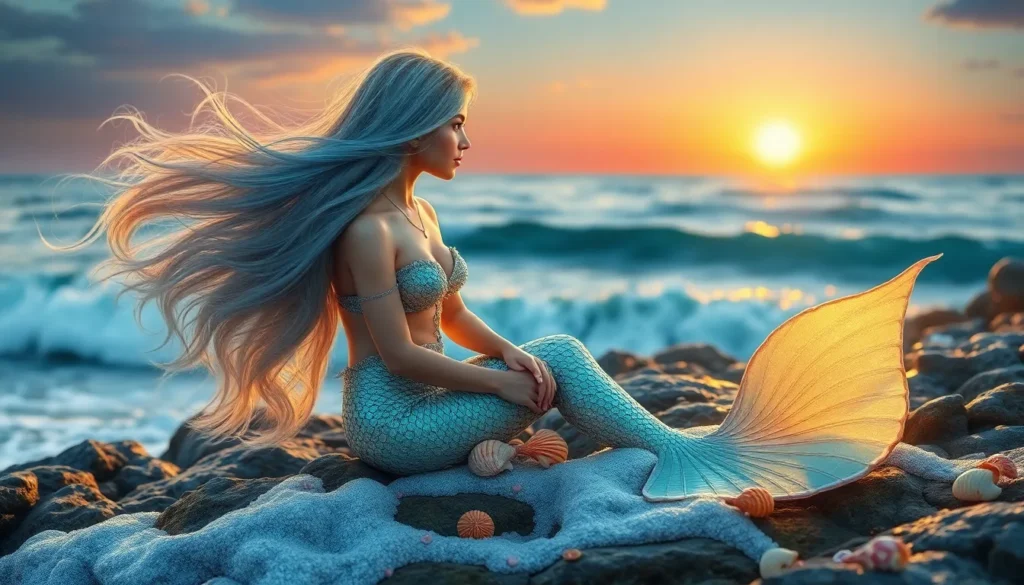Mermaids have captivated our imaginations for centuries, appearing in folklore from every corner of the globe. These mysterious half-human, half-fish beings spark endless debate about their true nature. Are they benevolent guardians of the sea or dangerous sirens luring sailors to their doom?
We’ve all heard conflicting tales – some paint mermaids as compassionate helpers who rescue drowning sailors and guide lost ships to safety. Others warn of vengeful sea spirits who sing haunting melodies to shipwreck vessels and claim human souls. The truth isn’t as simple as good versus evil.
Different cultures tell drastically different stories about these oceanic beings. While Western folklore often portrays mermaids as either romantic figures or deadly temptresses, other traditions view them as powerful deities deserving respect and reverence. Understanding these varying perspectives helps us uncover what mermaids truly represent in human consciousness and why we’re still fascinated by their dual nature today.
Related Posts:
- Are Shamans Good? The Truth About Ancient Healers vs. Modern Medicine
- Mermaid Dream Meaning: What Your Subconscious is Really Telling You
- Who Is the Mermaid God? Ancient Sea Deities From Poseidon to Yemoja Revealed
- Are Mermaids Good or Bad? The Truth Behind These Mysterious Sea Creatures
- Decoding Groundhog Luck: Myth, Symbolism, and Folklore Explored
- Good vs Evil: Unraveling the Biblical Interpretations of Gnomes
- Why Does God Take the Good Ones First? Faith, Grief & Finding Peace in Loss
- What Are Mermaid Powers and Weaknesses? Mythical Abilities vs Fatal Flaws Explained
The Dual Nature of Mermaids in Mythology
Mermaids embody contrasting roles across mythological traditions, serving as both compassionate guardians and perilous adversaries. Ancient cultures developed these opposing characterizations to represent humanity’s complex relationship with the ocean’s unpredictable forces.
Benevolent Protectors of the Sea
Benevolent mermaids appear throughout global folklore as ocean guardians who safeguard sailors and coastal communities. Celtic traditions describe mermaids rescuing drowning fishermen, guiding lost vessels to safety, and warning ships of approaching storms. Mediterranean folklore presents these sea beings as healers who share medicinal knowledge derived from underwater plants and minerals.
Scandinavian legends feature mermaids called hafstrambr who protect fishing grounds from overharvesting, ensuring sustainable catches for generations. Chinese mythology introduces dragon kings’ daughters who control rainfall and prevent devastating floods in coastal regions. African coastal cultures tell stories of water spirits called mami wata who bring prosperity to fishing communities and heal the sick with sacred waters.
Caribbean folklore depicts aycayia as benevolent water guardians who teach sustainable fishing practices and protect coral reefs from destruction. Pacific Islander traditions include stories of mermaids who guide lost souls to peaceful afterlife destinations beneath the waves.
Dangerous Temptresses and Destroyers
Dangerous mermaids manifest as destructive forces that lure sailors to watery graves through supernatural beauty and hypnotic songs. Greek mythology’s sirens represent the archetypal deadly mermaid, using enchanting voices to crash ships against rocky shores. Norse sagas describe margygr as malevolent sea witches who create violent storms and devour shipwrecked sailors.
Slavic folklore presents rusalka as vengeful spirits of drowned women who drag unfaithful lovers underwater during midnight encounters. German legends feature nixies who seduce young men with promises of underwater kingdoms, only to drown them in deep lakes and rivers. Japanese ningyo bring misfortune and natural disasters to communities that capture or harm them.
Caribbean stories include la sirene as dangerous seductresses who steal fishermen’s souls through passionate underwater encounters. Polynesian mythology describes shark goddesses who take mermaid forms to punish those who violate ocean taboos through violent attacks.
These destructive portrayals often emerge from cultures experiencing frequent maritime disasters, shipwrecks, and unexplained drownings that communities attributed to supernatural oceanic forces.
Cultural Perspectives on Mermaid Morality
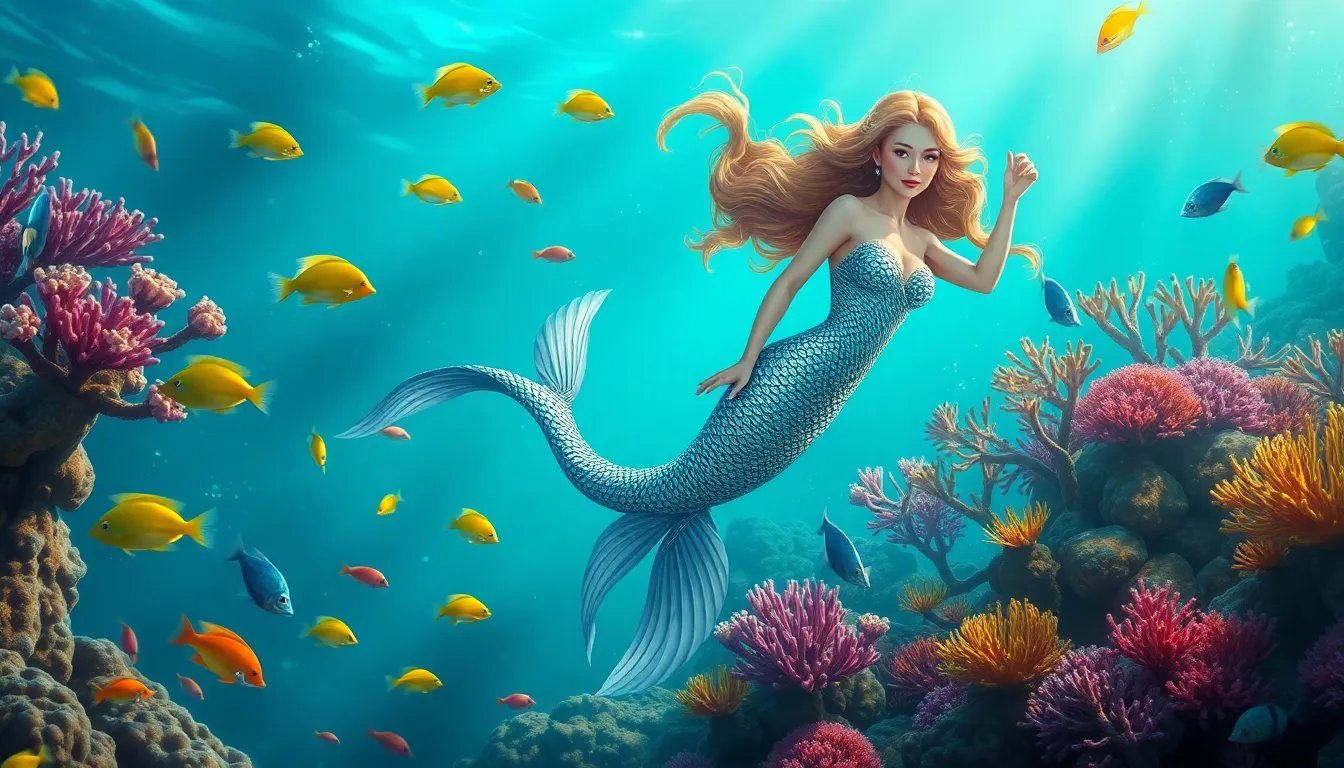
Different cultures shape how we perceive mermaid morality through their unique storytelling traditions and spiritual beliefs. Regional interpretations reveal fascinating contrasts in how societies view these mythical sea dwellers.
Western Folklore and Fairy Tales
Western folklore presents mermaids with distinctly dual personalities that embody both beauty and danger. Ships often featured mermaid figureheads to ensure safe passage and favorable weather conditions. Sailors simultaneously feared these creatures for their ability to lure men to watery graves, creating a complex moral framework.
Hans Christian Andersen’s “The Little Mermaid” transforms the traditional narrative by presenting moral complexity through the protagonist’s search for self-discovery and independence. Disney’s adaptation maintains these core themes of personal transformation while softening the darker elements of the original tale.
Traditional European stories frequently portray mermaids as unpredictable beings whose actions mirror the sea’s own volatile nature. Coastal communities developed protective rituals and offerings to appease these creatures, acknowledging their power over maritime fortune.
Eastern Mythologies and Ocean Spirits
Eastern mythologies typically depict sea spirits and mermaid-like beings as benevolent guardians of ocean prosperity. These cultures associate aquatic deities with fertility, abundance, and protection rather than destruction. Ocean spirits grant favorable fishing conditions and safe voyages when properly honored through ceremonial practices.
Cultural respect for marine environments influences how Eastern traditions portray water spirits morally. Reverence for ocean life translates into depictions of mermaids as wise protectors who punish those who harm marine ecosystems. Buddhist and Hindu traditions emphasize balance between human activities and oceanic harmony.
Japanese folklore features ningyo, creatures that bring either tremendous luck or devastating curses depending on how humans treat them. Chinese dragon kings rule underwater realms with wisdom and justice, protecting virtuous sailors while punishing those who pollute sacred waters.
Modern Media’s Influence on Mermaid Perception
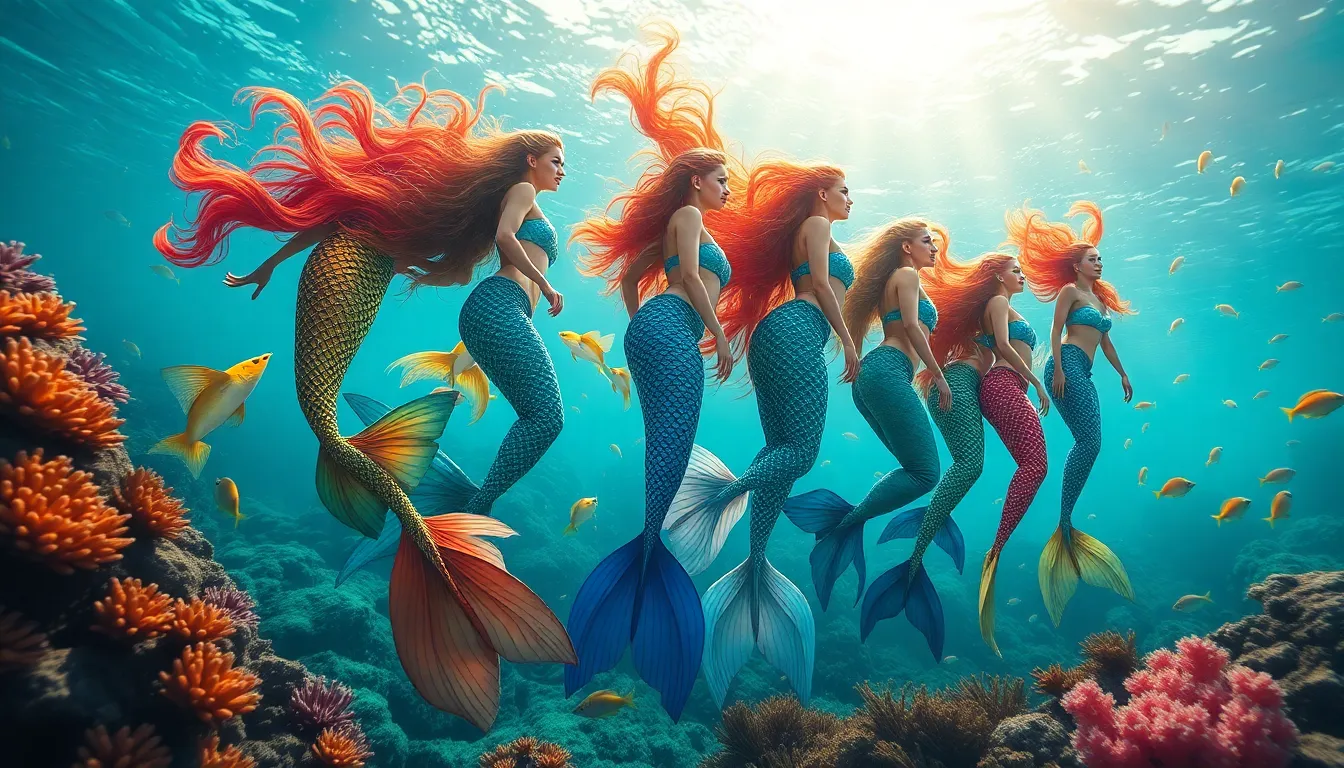
Modern media has fundamentally reshaped how we perceive mermaids, transforming them from the complex and often dangerous beings of ancient folklore into more nuanced characters. Entertainment platforms have become the primary drivers of contemporary mermaid imagery, with film studios and publishers wielding unprecedented influence over public perception.
Disney’s Transformation of Mermaid Image
Disney’s “The Little Mermaid” (1989) revolutionized mermaid perception by establishing a new archetype that prioritizes courage, kindness, and aspiration. This animated film recast mermaids as benevolent protagonists, moving away from the threatening water spirits found in traditional folklore. Disney’s version created a template that emphasized personal growth and moral virtue, cementing positive associations in popular culture.
The studio’s influence extends beyond individual films, shaping both children’s imaginations and adult perspectives on these mythic creatures. Disney’s portrayal contrasts sharply with earlier folktales where mermaids carried associations with danger or misfortune. Entertainment executives recognized the commercial potential of sympathetic mermaid characters, leading to widespread adoption of this positive framework across the industry.
Contemporary audiences now primarily encounter mermaids through Disney’s lens, which emphasizes themes of transformation and self-discovery. The company’s marketing strategies have embedded this benevolent mermaid image into merchandise, theme parks, and spin-off content, creating a cultural touchstone that influences how we interpret mermaid mythology.
Contemporary Movies and Literature
Current filmmakers and authors continue exploring the duality of mermaid mythology while building on Disney’s foundation. Many modern productions maintain the benevolent mermaid trope, creating stories that celebrate these creatures as symbols of freedom and environmental stewardship. Romance novels frequently feature mermaid characters as love interests, emphasizing their beauty and mystical appeal.
Recent works have also revived older, more sinister interpretations of mermaids as mysterious or malevolent beings. Dark fantasy films present mermaids as predatory creatures, drawing from ancient folklore to create compelling antagonists. Young adult novels explore morally ambiguous mermaid characters, blending traditional danger elements with contemporary storytelling techniques.
Social media platforms have amplified the “mermaid-core” trend, which blends beauty, mystery, resilience, and escapist fantasy elements. This cultural movement resonates particularly with younger audiences who embrace mermaid aesthetics in fashion and lifestyle choices. Professional “merpeople” performers have built careers by embodying these mythic personas, further embedding mermaid imagery into modern entertainment culture.
The persistence of both positive and negative portrayals creates opportunities for rich storytelling variety, from inspirational tales to horror narratives. Publishers and streaming services recognize audience appetite for mermaid content, commissioning projects that explore different aspects of mermaid mythology to capture diverse market segments.
Psychological Symbolism Behind Mermaid Legends
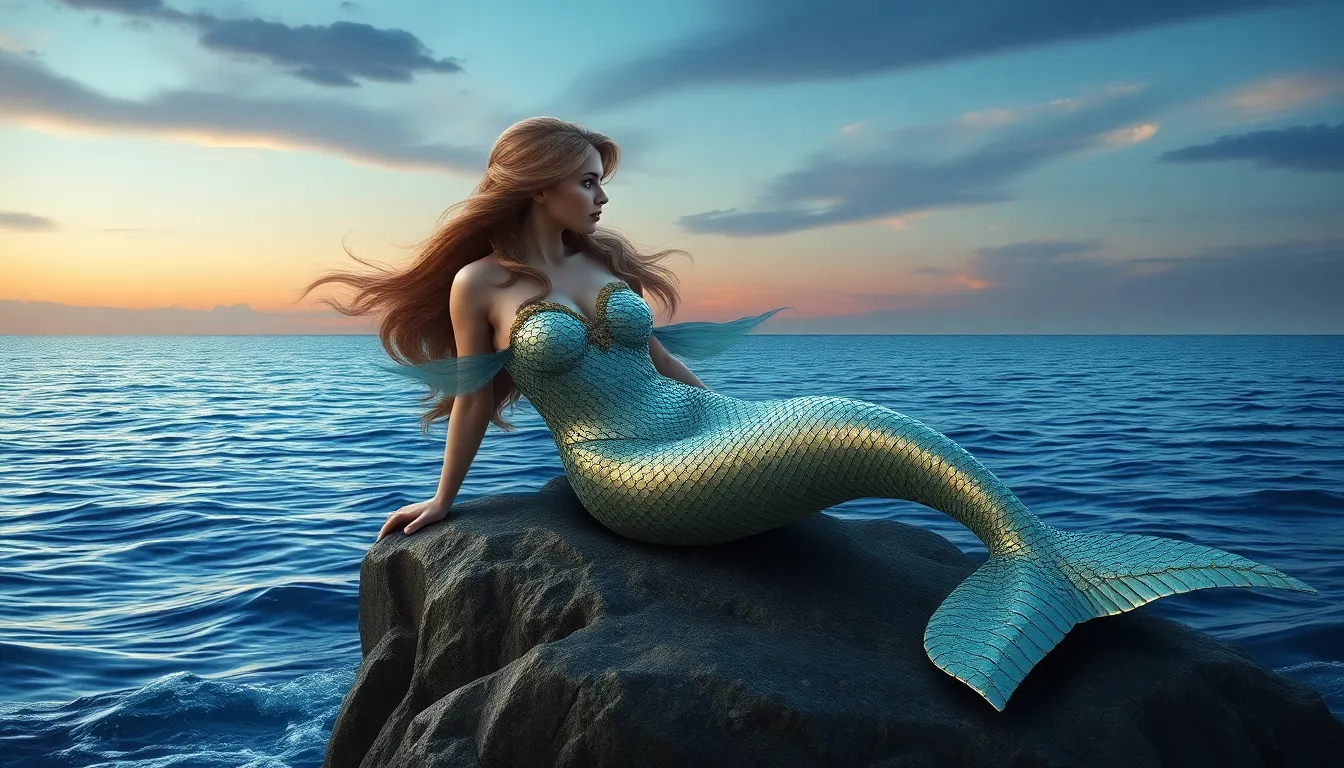
Mermaids embody complex psychological symbolism that bridges the conscious and unconscious realms of human experience. These liminal beings exist at the intersection of awareness and the collective unconscious, representing our struggle to integrate unconscious impulses into conscious understanding.
Representation of Human Desires and Fears
Mermaids symbolize humanity’s fascination with the unknown depths of both ocean and psyche. These mythical beings represent conflicting human desires: our yearning to connect with mystery and our fear of being drawn into danger or loss. Sailor folklore consistently portrays mermaids as figures who bring both good fortune and disaster, reflecting life’s unpredictable nature and the ocean’s dual character.
Our relationship with mermaids mirrors our complex emotions toward the sea itself. They embody the wild, violent, yet captivating forces of nature that humans simultaneously admire and fear. Maritime cultures throughout history have used mermaid imagery to express the tension between attraction and apprehension when facing the unknown.
These creatures serve as psychological vessels for our deepest anxieties about transformation and sacrifice. Hans Christian Andersen’s The Little Mermaid exemplifies this symbolism, portraying the pain of giving birth to new ideas or identities through the mermaid’s transformation. The mermaid archetype resists domestication, representing untamed aspects of human nature that require periodic renewal.
The Feminine Mystique in Maritime Culture
Mermaids function as archetypes of the sacred feminine, combining beauty, independence, and mystery within maritime traditions. Sea goddesses like Venus and Amphitrite influenced these representations, establishing mermaids as symbols of feminine power, sexuality, and transformation. Their presence in maritime culture reflects deep cultural associations between the feminine and the sea’s mysterious, ever changing nature.
Maritime folklore positions mermaids as embodiments of feminine mystique and otherworldly allure. Their independent spirit mirrors the wild, unpredictable ocean, reinforcing cultural perceptions of both the sea and feminine nature as powerful forces beyond human control. Popular culture continues this tradition, presenting mermaids as symbols of rebellion, individuality, and longing for freedom.
The mermaid’s dual nature reflects the complexity of feminine representation in maritime societies. These figures challenge traditional gender roles while simultaneously reinforcing cultural beliefs about feminine power and mystery. Related myths like the Selkie further explore themes of identity, freedom, and belonging, highlighting the mermaid’s role as a symbol of the wild feminine soul.
Regional Variations in Mermaid Character
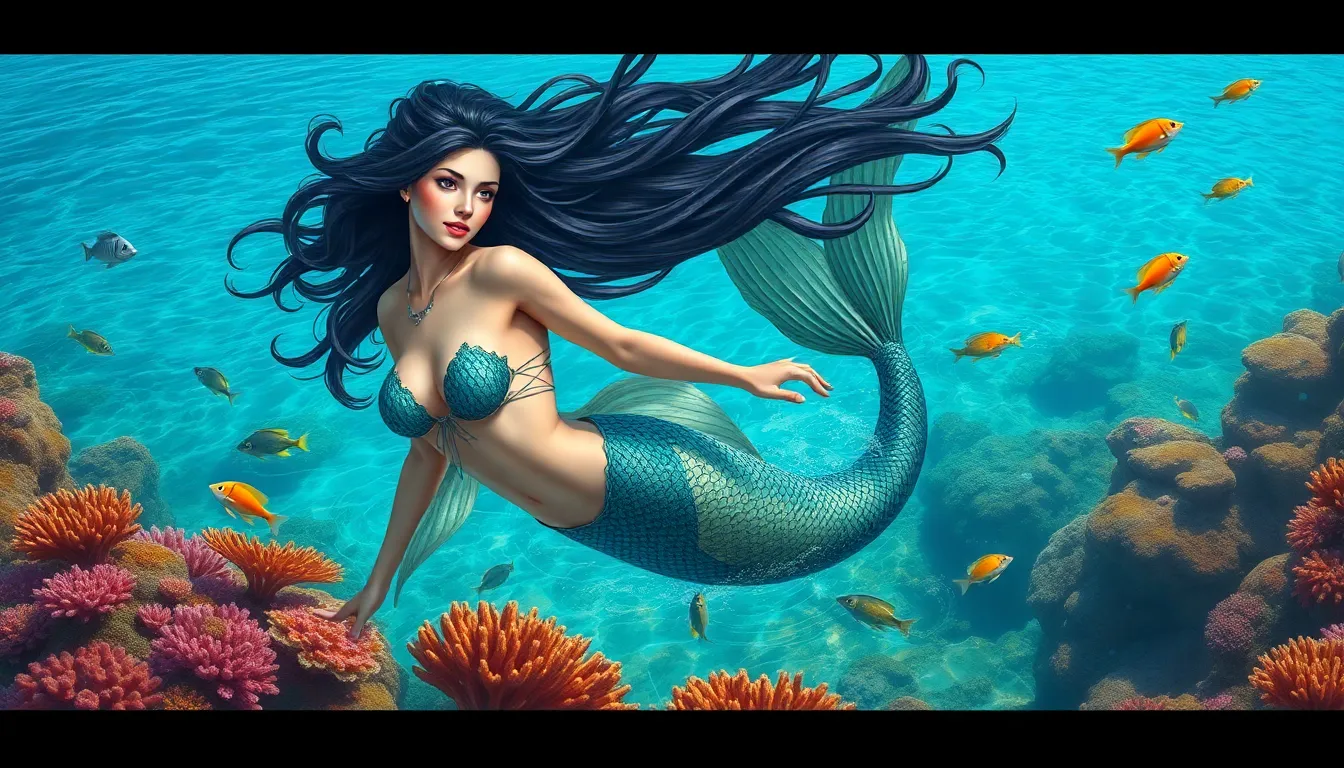
Cultural geography dramatically shapes how societies perceive mermaids, creating distinct regional interpretations that range from benevolent water spirits to deadly ocean predators. These variations reflect local maritime experiences, spiritual beliefs, and storytelling traditions that have evolved over centuries.
Caribbean and African Traditions
Caribbean and African folklore presents mermaids as complex supernatural beings embodying both protective and dangerous qualities. Mami Wata stands as the most prominent water spirit across these traditions, commanding worship and fear in equal measure. Communities associate her with good luck, fertility, beauty, material gain, and success, yet recognize her unpredictable nature that sometimes leads people to their deaths.
Taino mythology introduces us to Aycayia, a figure transformed into a mermaid as punishment for wrongdoing. This cursed individual roams the ocean depths, appearing sometimes as a seductress and other times as a victim of jealousy. Her story reflects the Caribbean understanding that mermaids carry the weight of human transformation and consequence.
Haitian traditions feature La Sirene and simbi spirits, powerful entities capable of both rescue and curse. These water beings demonstrate the fundamental duality we observe throughout Caribbean mermaid lore—their actions depend entirely on circumstances, human behavior, and spiritual relationships.
| Region/Tradition | Good Traits | Bad Traits |
|---|---|---|
| Caribbean/African | Protector, fertility giver, beauty bestower, success bringer | Unpredictable behavior, people luring, curse casting |
| Scandinavian/Celtic | Rarely positive portrayals | Dangerous seduction, shipwreck causing, drowning inducing |
Scandinavian and Celtic Interpretations
Scandinavian and Celtic traditions paint mermaids primarily as dangerous entities associated with maritime disasters and death. These cultures emphasize the perilous nature of mermaid encounters, warning against their seductive powers that lead sailors to destruction. Northern European folklore connects mermaids directly with storms, shipwrecks, and drowning incidents.
Beauty becomes a weapon in these narratives, with mermaids using their appearance and enchanting songs to beguile unsuspecting mariners. Celtic storytelling traditions particularly focus on the fatal attraction mermaids represent, portraying them as supernatural predators who exploit human weakness and desire.
These regional interpretations reflect harsh maritime realities faced by Scandinavian and Celtic communities, where ocean dangers claimed countless lives. Mermaid myths served as cautionary tales, embedding survival wisdom within supernatural narratives that emphasized respect for oceanic forces and wariness of unknown encounters at sea.
The Environmental Message of Mermaid Stories
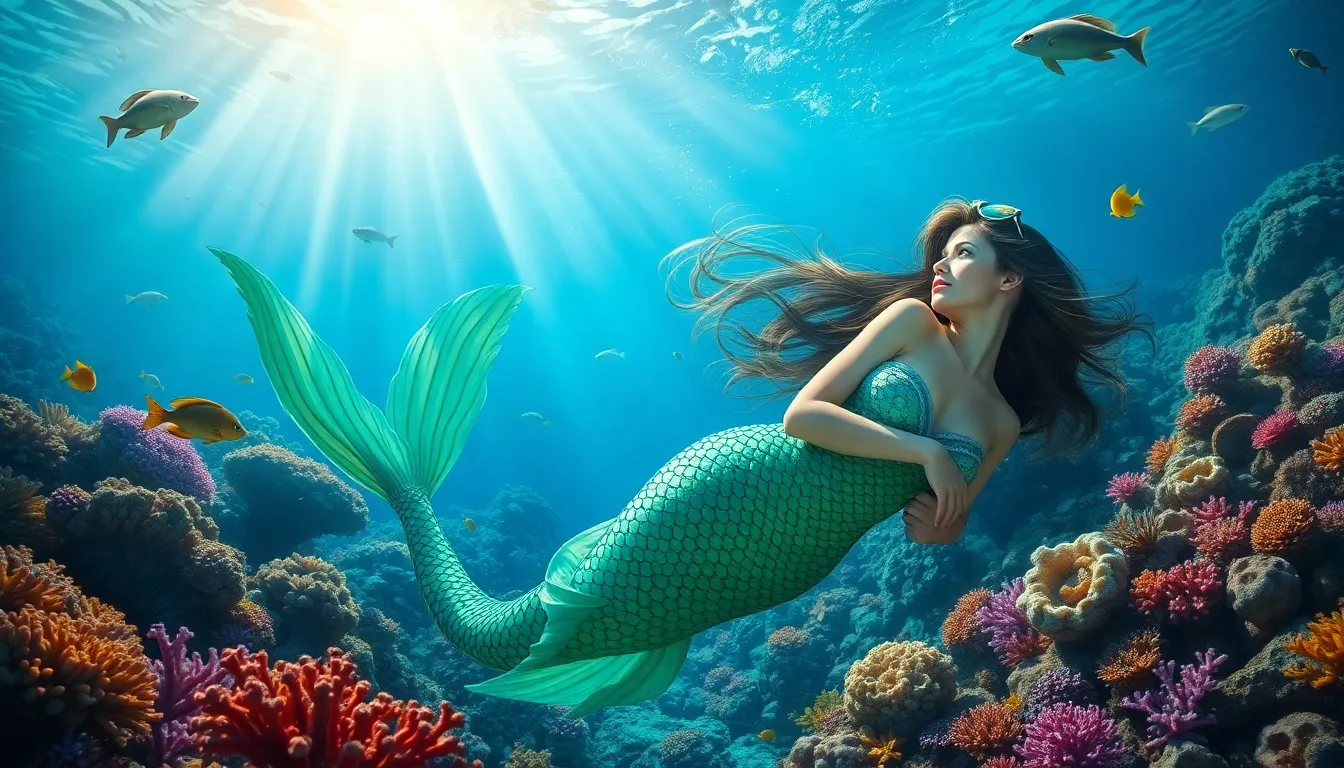
Contemporary mermaid narratives transcend traditional moral boundaries to address urgent environmental concerns facing our oceans today. These stories position mermaids as environmental refugees fleeing polluted waters, transforming them from mythical beings into powerful symbols of ecological crisis.
Environmental themes in modern mermaid literature demonstrate how these sea dwellers reflect our planet’s marine network challenges. Works like Alice Hoffman’s Aquamarine employ ecofeminist perspectives, using mermaid characters to critique human environmental destruction while emphasizing the interconnected relationship between nature and human survival.
Storytellers increasingly link mermaid narratives to exact environmental issues that threaten marine life balance. The story Siren directly connects mermaid experiences to overfishing practices and seabed stripping operations, highlighting how these activities devastate coastal communities and underwater habitats.
Educational initiatives have emerged using mermaid stories to promote environmental awareness among younger audiences. “The Little Mermaid Saves Our Seas!” series demonstrates how classic mermaid tales can be adapted with comedic elements to teach children about ocean conservation and marine protection.
These environmental messages transform our understanding of whether mermaids represent good or bad forces in storytelling. Rather than embodying inherent moral qualities, contemporary mermaids serve as narrative vehicles for raising awareness about climate change, ocean pollution, and marine network destruction.
Modern mermaid depictions reveal how environmental storytelling creates new archetypal meanings for these sea creatures. Authors and filmmakers use mermaid characters to communicate complex environmental science concepts, making ecological issues accessible through familiar mythological frameworks that resonate with diverse audiences.
Conclusion
The question of whether mermaids are good or bad eventually reveals more about us than about these mythical beings themselves. We’ve seen how our cultural values beliefs and environmental concerns shape these aquatic figures into whatever we need them to represent.
From ancient maritime warnings to modern environmental advocacy mermaids continue evolving with our collective consciousness. They serve as mirrors reflecting our deepest fears about the unknown and our hopes for protecting what we love most.
Whether portrayed as benevolent guardians or dangerous temptresses mermaids remain powerful symbols that transcend simple moral categories. Their enduring appeal lies in their ability to embody the complexity of human experience itself.
Frequently Asked Questions
What are mermaids in folklore and mythology?
Mermaids are mythological creatures found in folklore across various cultures, typically depicted as half-human, half-fish beings. They appear in stories worldwide, from ancient Greek sirens to Caribbean Mami Wata traditions. These creatures embody humanity’s complex relationship with the ocean, representing both its beauty and dangers through diverse cultural narratives.
Are mermaids portrayed as good or evil in different cultures?
Mermaid portrayals vary significantly across cultures. Some traditions depict them as benevolent guardians who protect sailors and coastal communities, while others portray them as dangerous beings who lure sailors to their doom. Western folklore often emphasizes their dual nature, while Eastern mythologies frequently present them as wise protectors.
How has Disney influenced modern perceptions of mermaids?
Disney’s “The Little Mermaid” revolutionized mermaid imagery by creating a positive archetype emphasizing courage and kindness. This transformation shifted mermaids from complex, often dangerous folklore figures to more sympathetic characters in popular culture. The Disney influence extends to contemporary films and literature, establishing mermaids as symbols of freedom and environmental stewardship.
What do mermaids symbolize psychologically?
Psychologically, mermaids represent humanity’s fascination with the unknown and embody complex human experiences. They symbolize transformation, sacrifice, and the tension between desire and danger. Mermaids also serve as archetypes of the sacred feminine, combining beauty, independence, and mystery while challenging traditional gender roles.
How do regional cultures interpret mermaids differently?
Regional variations in mermaid lore reflect local maritime experiences and cultural values. Caribbean and African traditions feature protective yet dangerous figures like Mami Wata, while Scandinavian and Celtic folklore emphasizes perilous entities associated with maritime disasters. These interpretations embed survival wisdom within supernatural narratives that respect ocean dangers.
What environmental messages do modern mermaid stories convey?
Contemporary mermaid narratives address urgent ecological concerns by positioning mermaids as environmental refugees fleeing polluted waters. Modern stories use mermaids as symbols of ecological crisis, addressing issues like overfishing and marine pollution. Educational initiatives leverage mermaid tales to promote environmental awareness and climate change consciousness among younger audiences.
Why do mermaids continue to fascinate people today?
Mermaids remain captivating because they embody universal human experiences and anxieties about the unknown. Their dual nature reflects our complex relationship with nature, while their transformation themes resonate with personal growth narratives. The “mermaid-core” trend on social media demonstrates their continued relevance in expressing freedom, mystery, and environmental consciousness.

